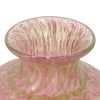Steuben Cluthra Green Glass "Hunting" Pattern Vase
Lot 52
About Seller
Akiba Antiques
3 N Federal Hwy
Dania Beach, FL 33004
United States
Akiba Antiques, founded by Charles and Franceska Akiba in the 1980’s in Paris, France started by buying and selling fine arts. Franceska specialized in French furniture from the fine Napoleonic Era to La Belle Epoque, to Art Nouveau and Art Deco; While Charles’ expertise lied in European paintings b...Read more
Categories
Estimate:
$500 - $5,000
Absentee vs Live bid
Two ways to bid:
- Leave a max absentee bid and the platform will bid on your behalf up to your maximum bid during the live auction.
- Bid live during the auction and your bids will be submitted real-time to the auctioneer.
Bid Increments
| Price | Bid Increment |
|---|---|
| $0 | $20 |
| $500 | $50 |
| $1,000 | $100 |
| $2,000 | $250 |
| $5,000 | $500 |
| $10,000 | $1,000 |
| $25,000 | $2,500 |
| $50,000 | $5,000 |
| $100,000 | $10,000 |
| $250,000 | $25,000 |
About Auction
By Akiba Antiques
Dec 16, 2021
Set Reminder
2021-12-16 12:00:00
2021-12-16 12:00:00
America/New_York
Bidsquare
Bidsquare : The Fabulous Collection of Mr. & Mrs. Schultz
https://www.bidsquare.com/auctions/akiba-antiques/the-fabulous-collection-of-mr-mrs-schultz-7923
Rare Steuben Glass, European Antiques, and Fine Art. Akiba Antiques info@akibaantiques.com
Rare Steuben Glass, European Antiques, and Fine Art. Akiba Antiques info@akibaantiques.com
- Lot Description
DESCRIPTION: Steuben Cluthra green to rose to brown glass "Hunting" pattern vase. Cased acid-etched lead glass. Reference: Shape 7007, p.316 Paul V. Gardner. Shown in 1932 Steuben catalogue. Part of the Carder Steuben collection of the Wichita Art Museum Pictured p. 74 of Objects of Desire: The Art of Frederick Carder by Alan Shovers. Seen in 1932 Steuben Catalog at p. 18. Color described as Green over Brown into Rose Cluthra" Retail $40.00. "One piece in the writer's collection has black dragons superimposed over blue jade and shows four different levels which indicate that three different resists were applied and a similar number of acid dips. Another is #7007 Boothby showing a design in Brown over Green over Rose Cluthra. A separate treatise needs to be written to do this portion of Carder's work full justice." Carder Steuben Glass Handbook and Price Guide by John F. Hotchkiss, p. 33. See coloring in Turn of the Century Glass The Murray Collection of Glass at fig. 60. Boothbay pattern in black over alabaster at fig. 6.25, p. 145, Frederick Carder and Steuben Glass by Dimitroff. Per discussion with west Coast dealer Sol Zwirn the Boothbay pattern is rare. "The second most sought after Steuben item in colored crystal is the ware known by this name. Nineteenth Century European in origin, where undoubtedly Mr. Carder first saw some, it remained for his Steuben Glass Works to perfect it to a magnificent degree of creative effort. "As with items in the Acid Cut Back category, Cluthra was not produced in any great quantity, though most certainly a much greater number were crafted than the former. "Another similarity between Cluthra and the Acid Cutbacks is the size, usually quite large and similarly thick and heavy." "More often than not a Carder Cluthra will not be signed. If one is signed it will have the Steuben Fleur de Lis acid etched on the base in a random position. As one becomes familiar with signed Steuben, and in particular the Fleur d'Lis, it will be noted that the signature may occur at any portion of the base, from pontil to outer edge, with absolutely no position uniformity." "The manufacture of Cluthra was carried on at periodic intervals, approximately between 1915 to 1933." "The chemical additive burst into a gaseous mass of bubbles, which in the finished product resembles miniature fired eggs, ranging from 1/8 inch diameter to as large as one inch in diameter." A Guide to Colored Steuben Glass 1903-1933(Vol I) by Eric E. Ericson, pp. 45-47. "Now then, let us consider the specific example of Cluthra. Acid Cut Back. Experience, as well as knowledge, points to a solid conclusion that indeed this is a rare item. Figuratively speaking five are known." P. 131 of Ericson's Book Two. See a somewhat similar Art Deco vase discussed by Louise Luther in her book, Miller's Art Glass How to Compare Values. She notes that the raised, flared rim complements the oval, neo-classical form; the spiked border with graduated dots adds to the Art Deco style. The two-color Cluthra of bubbled and mottled glass, shading from yellow into pink-rose, makes this a rare and costly example. Dramatic and collectible, this god-ruby glass was acid-etched with Art Deco elements in the Steuben "Cliftwood" pattern. Heavy and wide, the vase exhibits an elegant graphic impact. Bot its size and decoration increases its collectibility and its market value. The difficult technical processes increase its value. P. 79 The piece featured in the Luther book is 10 inches H, and 14" for the Boothbay piece. CIRCA: 1920s-1932 ORIGIN: USA DIMENSIONS: D: 9.75" H: 13.25" Have a similar item to sell? Contact: Info@Akibaantiques.com. CONDITION: Great condition. See lot description for details on item condition. More detailed condition requests can be obtained via email (info@akibaantiques.com) or SMS(305)-332-9274. Any condition statement given, as a courtesy to a client, is only an opinion and should not be treated as a statement of fact. Akiba Antiques shall have no responsibility for any error or omission.
- Shipping Info
-
For shipping please contact our 3rd party shipper: UPS STORE 954 4541131 auctions1937@gmail.com Contact Name:David
-
- Payment & Auction Policies
-
Available payment options
Thank you and congratulations on your new purchase!
-
-
- Buyer's Premium



 EUR
EUR CAD
CAD AUD
AUD GBP
GBP MXN
MXN HKD
HKD CNY
CNY MYR
MYR SEK
SEK SGD
SGD CHF
CHF THB
THB




























